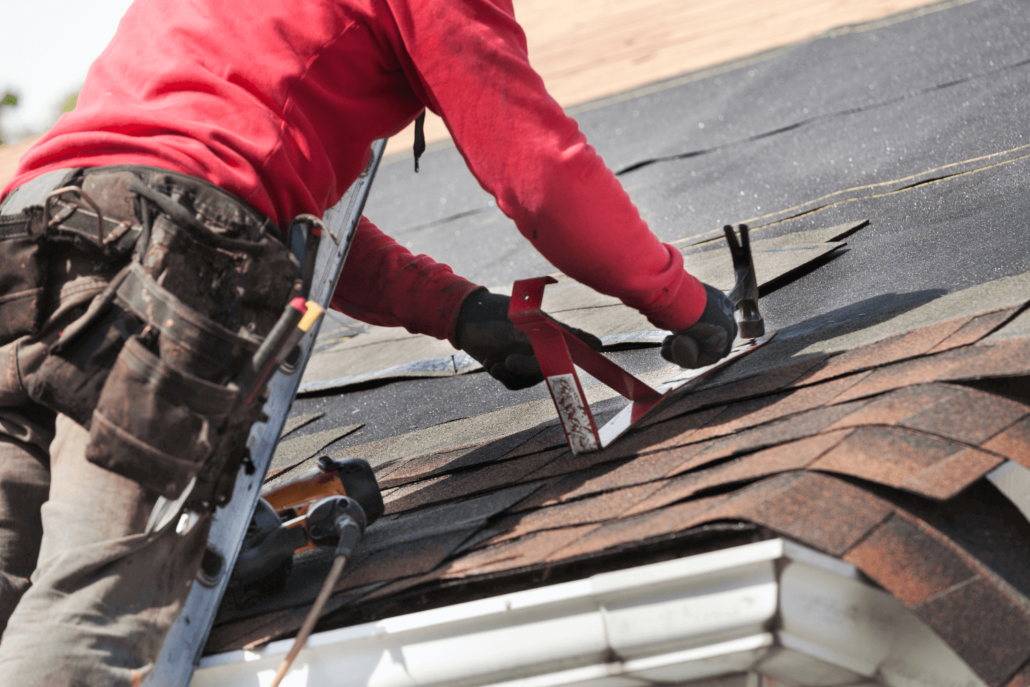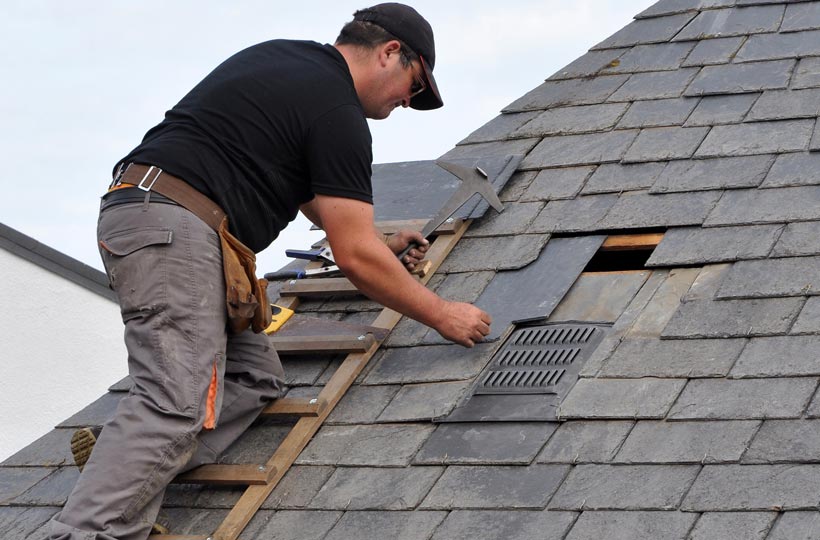Seasonal Roof Covering Repair Service Checklist: Prepare Your Roof Covering for every single Climate
To prepare your roofing system for every climate period, start with a detailed examination before winter. Examine for missing out on shingles and use around smokeshafts. As spring shows up, make sure all rain gutters are tidy and look for loosened floor tiles. Summertime upkeep need to concentrate on ventilation and granule loss on tiles. Come autumn, clear gutters once again and visually evaluate for any kind of signs of wear. Knowing common roofing concerns and when to call an expert can assist extend your roofing system's life-span.
Evaluating Your Roofing Prior To Wintertime
As winter season methods, it's vital to inspect your roof covering thoroughly to avoid expensive damage. Start by looking for missing out on or harmed shingles; also a tiny issue can lead to larger troubles when snow and ice gather. Search for signs of wear around smokeshafts, vents, and flashing, as these locations are commonly prone to leaks.
Next, analyze the downspouts and gutters. Verify they're clear of particles, as clogged rain gutters can create water to support and damage your roof covering. Take note of any type of drooping areas, which could indicate architectural issues needing immediate interest.
Do not fail to remember to check your attic for indications of water damages or mold and mildew, which might signify a roof covering leakage. If you spot any kind of major problems, it's sensible to get in touch with a specialist for repair work. Taking these steps will help ensure your roof withstands the harsh winter season ahead.
Preparing Your Roofing System for Springtime Showers
Before the spring showers get here, it's critical to prepare your roof covering to deal with the increased wetness and prospective storms. Begin by checking your roof covering for any kind of loose tiles or ceramic tiles. Make sure they're safely secured to stop leakages throughout heavy rain. Next off, clean seamless gutters and downspouts to assure proper water drainage; clogged up gutters can bring about water merging and roof covering damage.
Check for any kind of signs of damages, like splits in the flashing or locations where water could collect. It's ideal to address it now instead than wait for the first downpour. if you see anything worrying.
Additionally, take into consideration cutting overhanging tree branches to lower the danger of them falling on your roofing system during storms. Ultimately, if your roof covering is older, think regarding scheduling a specialist evaluation. Taking these actions now will certainly aid you stay clear of expensive repair services later and maintain your home secure and completely dry this spring.
Summer Season Maintenance Tips for Your Roof
As summer strategies, it's a blast to provide your roofing some extra attention. You ought to inspect for shingle damage, clean your gutters extensively, and check your air flow systems to guarantee everything's in leading form. Taking these actions currently can conserve you migraines in the future.
Inspect for Shingle Damage
While summer season brings longer days and warmer climate, it's also the best time to examine your roof covering for roof shingles damages. Bear in mind, a properly maintained roof not just protects your home yet also enhances its visual appeal. By taking these steps now, you'll ensure your roof remains solid and reputable throughout the summertime and past.
Tidy Gutters Completely
Cleansing your seamless gutters completely is necessary for preserving your roof's health during the summertime. Clogged up gutters can lead to water backup, creating possible damages to your roofing system and home. Begin by getting rid of fallen leaves, branches, and particles from the gutters making use of a scoop or your hands while putting on gloves. As soon as gotten rid of, purge the rain gutters with water to ensure proper water drainage. Inspect downspouts for blockages, and make sure water streams openly away from your structure. Take into consideration utilizing a yard pipe with a spray nozzle to remove persistent blockages if required. Routinely cleaning your gutters not only stops roofing damages but also shields your home from mold and mildew. Keep proactive to maintain your roofing system in top shape this summertime!
Inspect Air Flow Systems
To ensure your roof stays in peak problem throughout the summertime, checking your air flow systems is important. Correct ventilation aids regulate your attic's temperature, protecting against warm accumulation that can cause damage. Start by checking your roofing's vents, guaranteeing they're not blocked by particles or insulation. Try to find any indications of corrosion or wear and tear, as these can jeopardize performance. Make certain they're unhampered to permit fresh air flow if your roofing system has soffit vents. Think about setting up ridge vents if you don't have ample ventilation. Inspect your attic for correct airflow; a well-ventilated attic can significantly lower cooling down prices. By preserving your air flow systems, you'll boost your roof covering's life-span and keep your home comfortable all summer season long.
Fall Evaluation: Getting Ready for Wintertime
As autumn techniques, it's vital to examine your roof covering for any kind of loosened tiles that can be vulnerable to winter weather. Don't forget to clear out gutters and debris to ensure correct drain and stop ice dams. Taking these steps now can conserve you from larger frustrations in the future.
Inspect for Loose Tiles
Before wintertime embed in, it's important to check your roofing for loosened roof shingles, because these can lead to severe concerns when snow and ice build up. Beginning by aesthetically analyzing your roof covering from the ground. Seek any shingles that appear misplaced, split, or missing out on. If you can securely get onto your roofing system, look for any kind of indicators of wear or damages up close. Delicately lift each shingle to see if it's safeguarded effectively. If you locate loose ones, reattach them or change them as required. Pay unique attention to the roof covering sides and valleys, where wind can displace tiles much more conveniently. Taking these steps now can conserve you from expensive repair work later when winter weather hits.
Clear Rain Gutters and Debris
Clearing up rain gutters and eliminating particles is an important step in preparing your roof for winter season. Clogged up rain gutters can lead to water backup, creating ice dams that harm your roof covering and home. Start by utilizing a durable ladder to access your rain gutters securely. Eliminate fallen leaves, branches, and any other particles that's collected. Don't fail to remember to inspect downspouts, ensuring they're clear and guiding water away from your foundation. If you discover any kind of areas where water has a tendency to pool, think about readjusting the slope of your rain gutters. Once whatever's clean, flush the rain gutters with water to examine for appropriate water drainage. Taking these steps now will certainly help stop pricey repairs down the line and maintain your roof covering in good shape throughout the wintertime period.
Cleaning up and Cleaning Seamless Gutters and Downspouts
While you may not believe about downspouts and gutters routinely, keeping them tidy is necessary for preserving your roof covering's health. Stopped up gutters can lead to water buildup, which can harm your roof covering and structure. To start, get hold of a durable ladder and some handwear covers. Carefully climb up to inspect your seamless gutters for leaves, dirt, or particles.
When you see the buildup, scoop it out using your hands or a tiny trowel. A garden hose can assist flush it out if you come across persistent gunk. Do not fail to remember to examine the downspouts; see to it they're clear so water can move openly.
If you discover any kind of clogs, utilize a plumbing serpent or a high-pressure nozzle to clear them. Routine cleaning, preferably twice a year, maintains your rain gutters operating properly and protects against pricey repair services down the line. Your roof covering will thank you for the effort!
Recognizing Typical Roof Concerns by Season
As the periods modification, it's crucial to stay alert regarding your roofing's condition, given that each period brings its very own set of challenges. In winter months, look for ice dams that can create water to support under tiles, resulting in leaks. Spring typically brings hefty rainfalls, so check for missing shingles and look for water merging.
Summer season's heat can cause fractured shingles or blistering, so keep an eye out for signs of wear. Fall's dropping leaves can block gutters and catch moisture, enhancing the threat of mold and mildew and decay.
 roof repair
roof repair
When to Call a Professional Contractor
When to call an expert roofing contractor can save you time and cash,Recognizing. If you discover missing out on shingles, water spots on your ceiling, or leakages during a rainstorm, it's time to connect for help. Don't take too lightly the risks of getting on your roofing yourself, particularly if you lack experience. Security ought to always precede.
If your roofing is over 20 years old or shows significant damage, consulting a professional is wise. They can assess whether repair work or a complete replacement is essential. In addition, after severe climate occasions like storms or hail storm, get an expert to examine for hidden damage.
When your DIY initiatives become aggravation or if you're uncertain about a repair service, calling a roofer can protect against further damage. Bear in mind, purchasing specialist assistance can extend your roof covering's life expectancy and assure your home keeps safeguarded.
Often Asked Questions
Just how Frequently Should I Check My Roof Throughout the Year?
You must check your roof covering a minimum of twice a year, preferably in springtime and loss. Normal checks help you capture potential concerns early, ensuring your roof covering remains in good condition and shields your home effectively.
What Tools Do I Required for Roofing Inspections?
For roofing inspections, you'll require a sturdy ladder, safety belt, flashlight, and field glasses. A dampness meter and a measuring tape can likewise aid the full guide you analyze any type of damage properly. Do not fail to remember handwear covers for security!
Can I Fix My Roofing system Myself or Should I Employ an Expert?
You can fix your roof yourself if you're positive and have the right devices. If you're unsure or the damages is comprehensive, working with an expert warranties safety and security and high quality outcomes. Don't be reluctant to request for aid!
If My Roofing System Needs Replacing?, just how Do I Know.
You'll understand your roofing system needs replacing if you see considerable leaks, curling shingles, or granule loss. If it mores than two decades old or noticeably drooping, it's time to consider a substitute before further damage takes place.
What Are the Indications of Roof Covering Damage After a Tornado?
 roof repair
roof repair
Seasonal Roof Covering Repair List: Prepare Your Roof Covering for Every Weather
Knowing regarding usual roofing system problems and when to call an expert can help lengthen your roofing's life expectancy.
Verify they're clear of debris, as clogged seamless gutters can trigger water to back up and damage your roofing system. Next, tidy out seamless gutters and downspouts to assure correct drainage; stopped up rain gutters can lead to water merging and roofing system damages.
Blocked gutters can lead to water backup, triggering prospective damages to your roofing system and home.